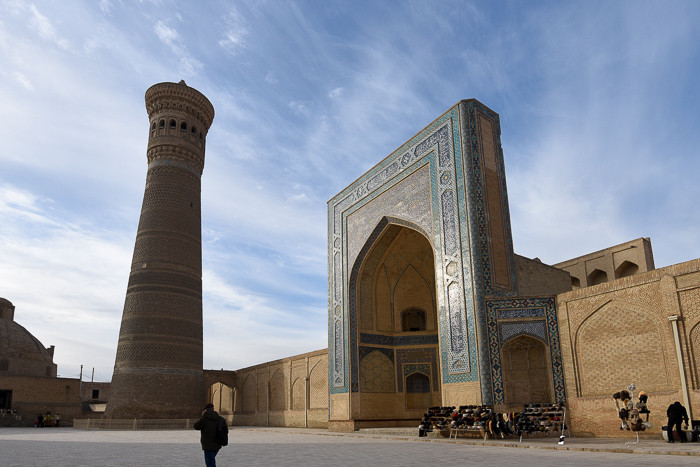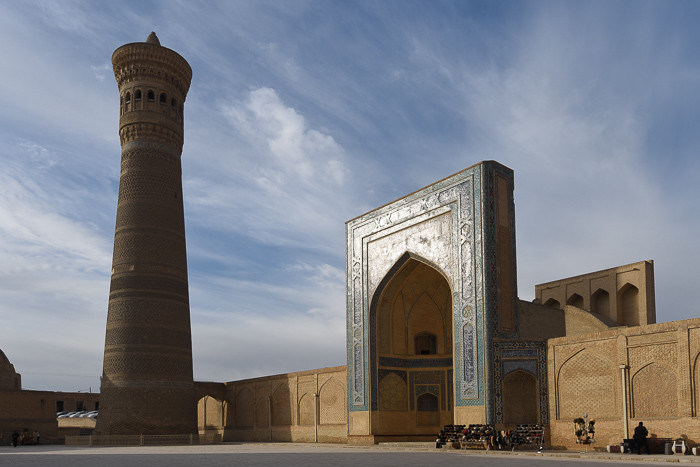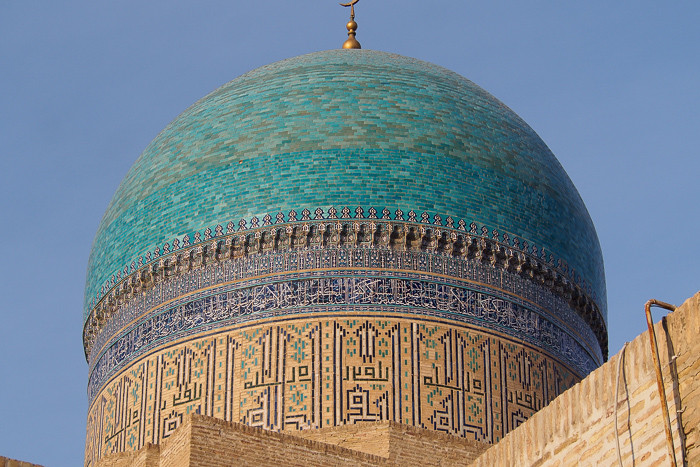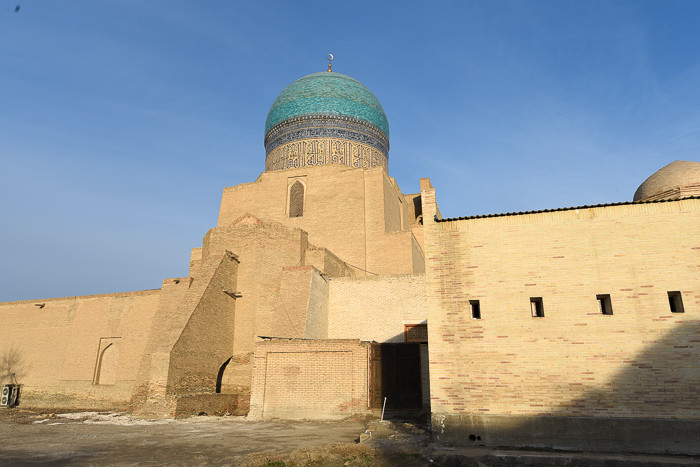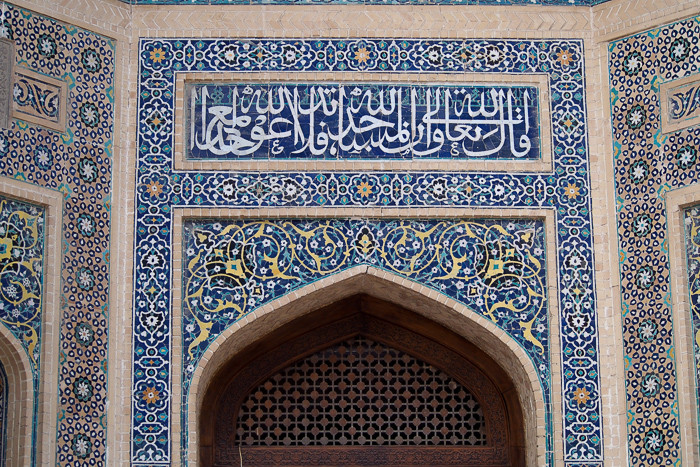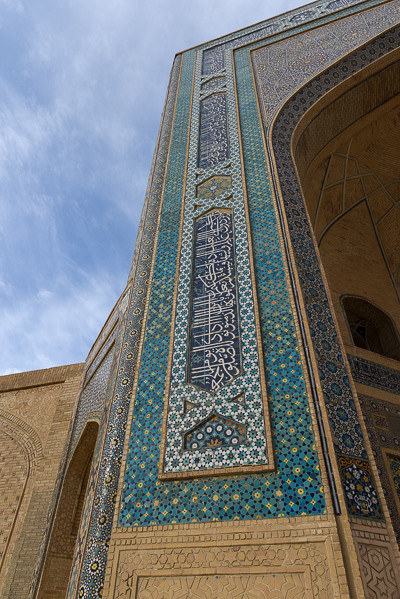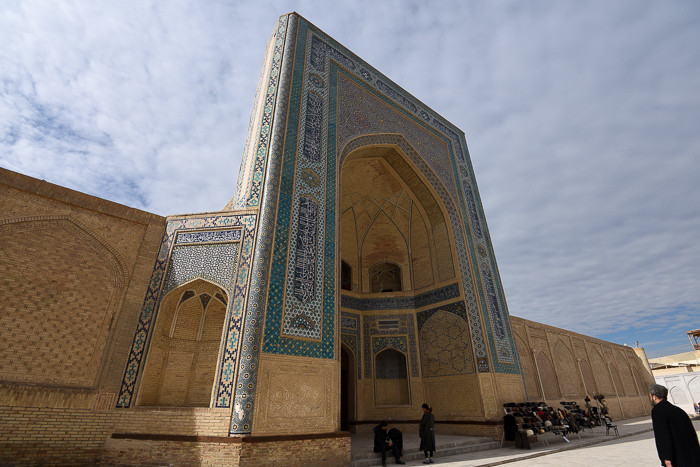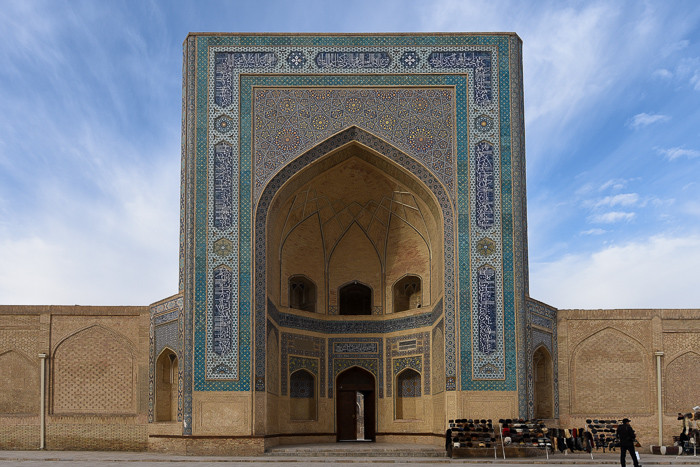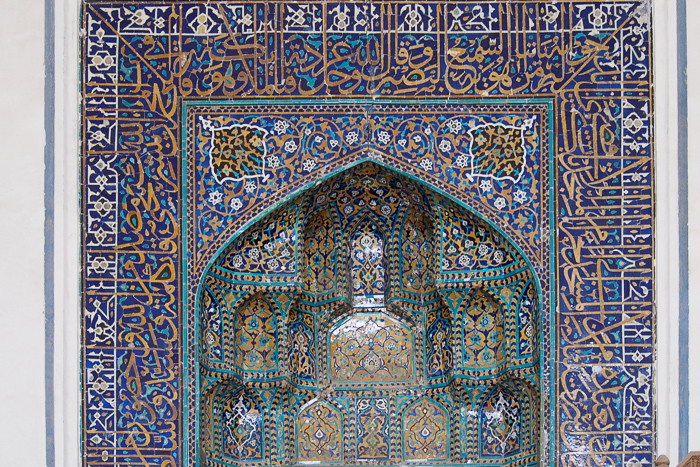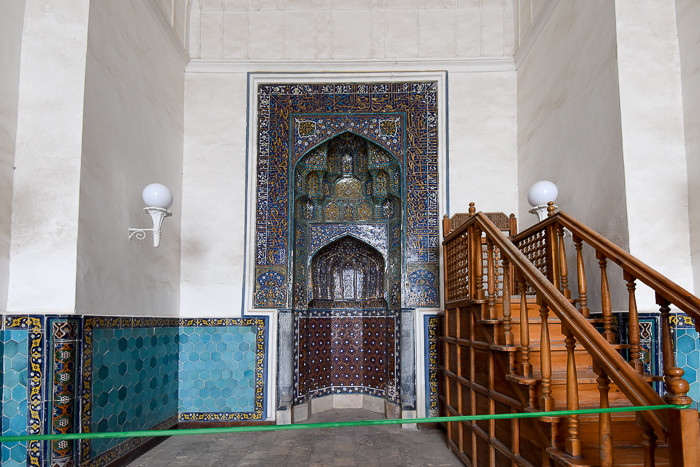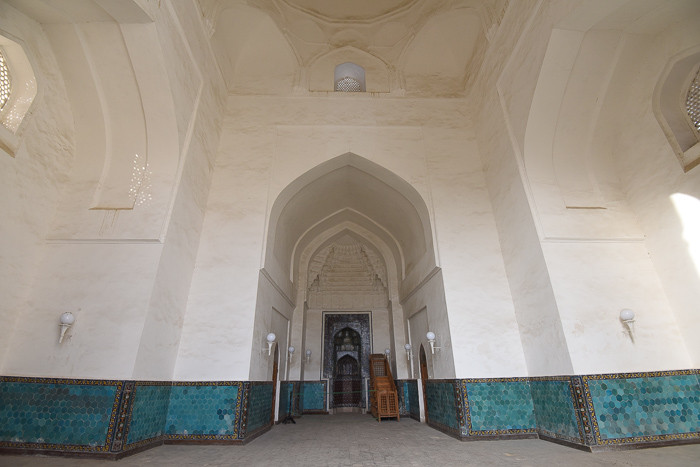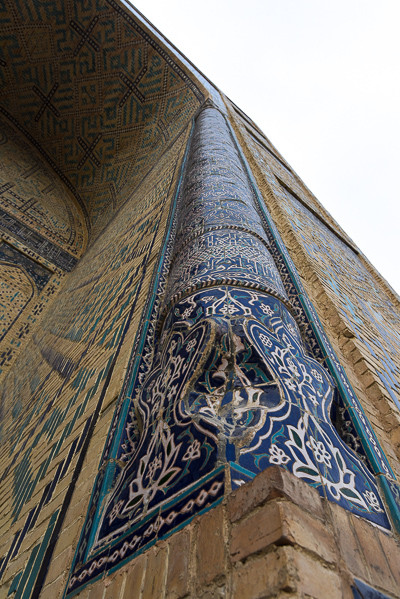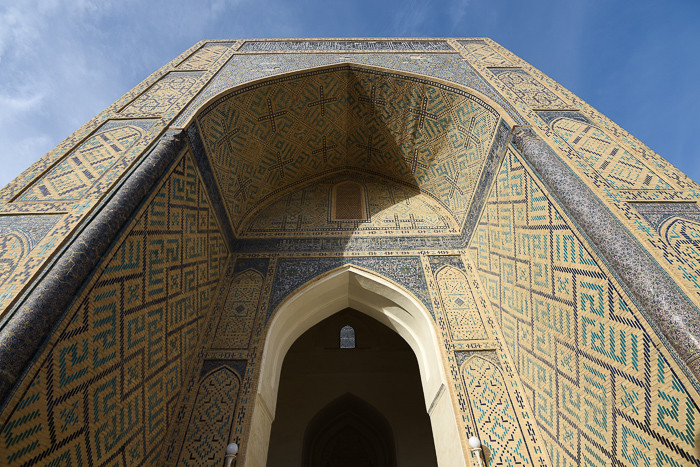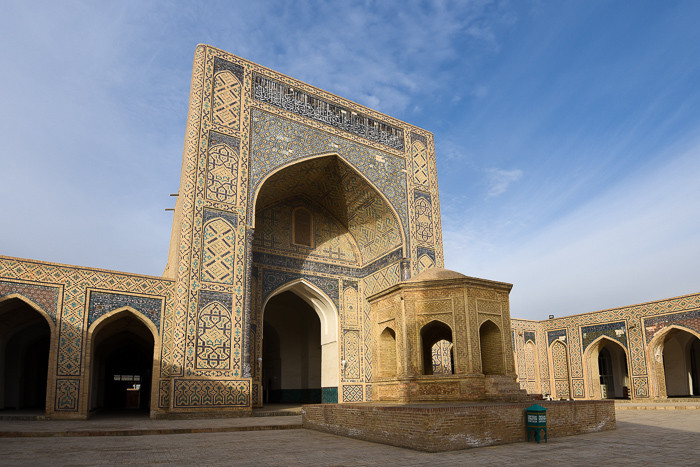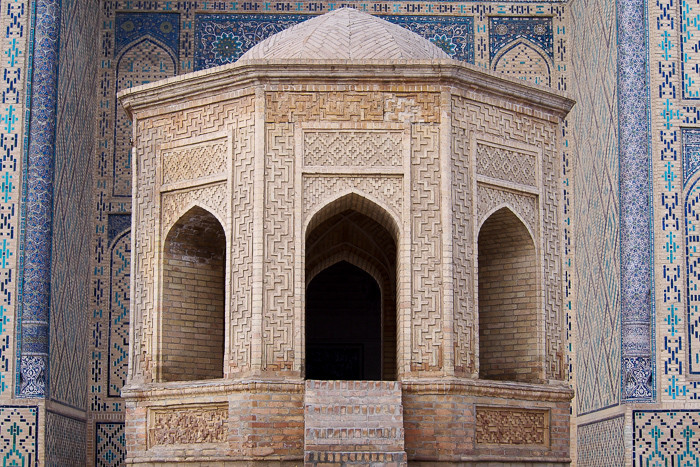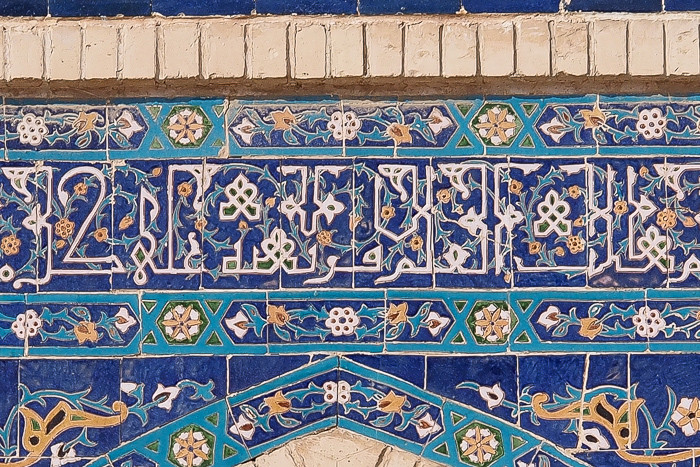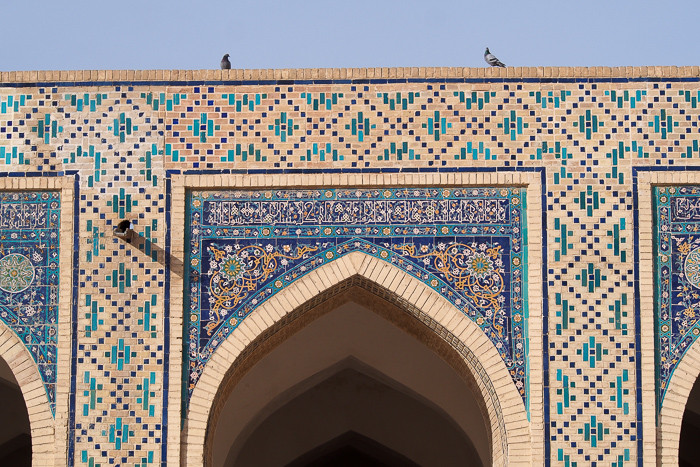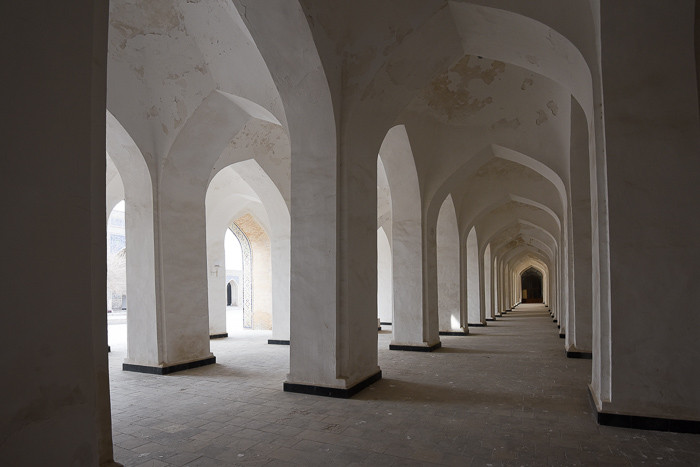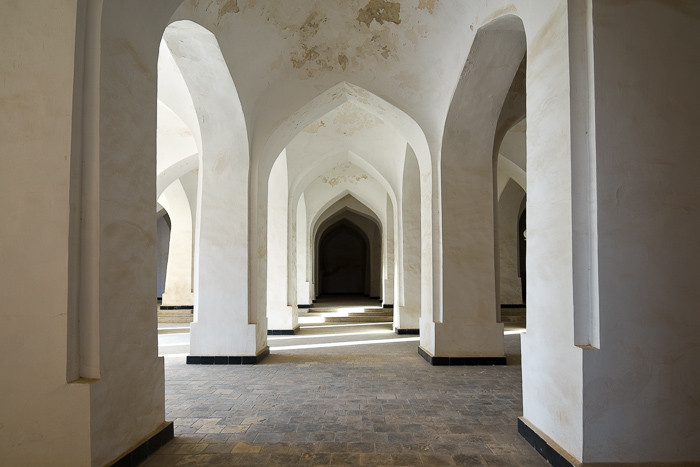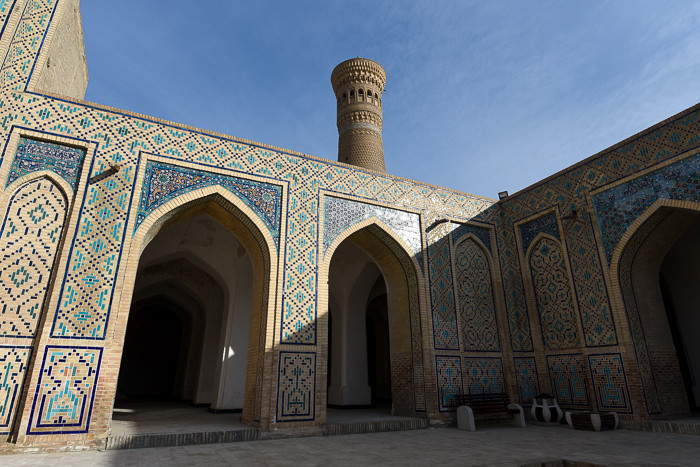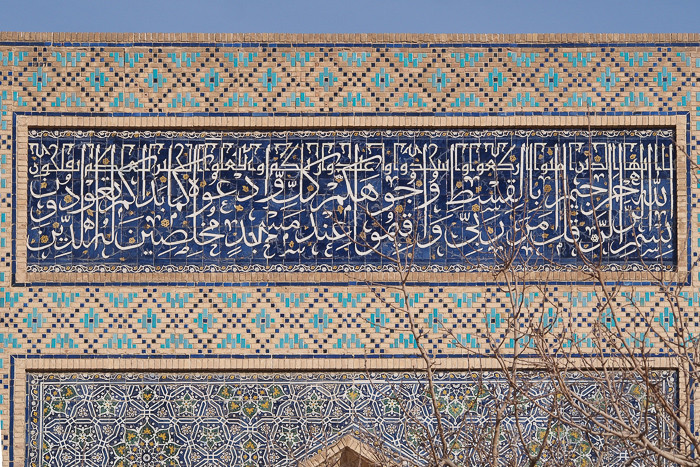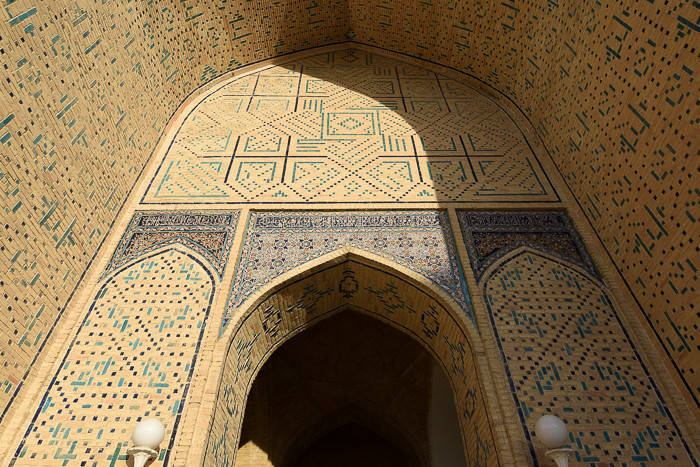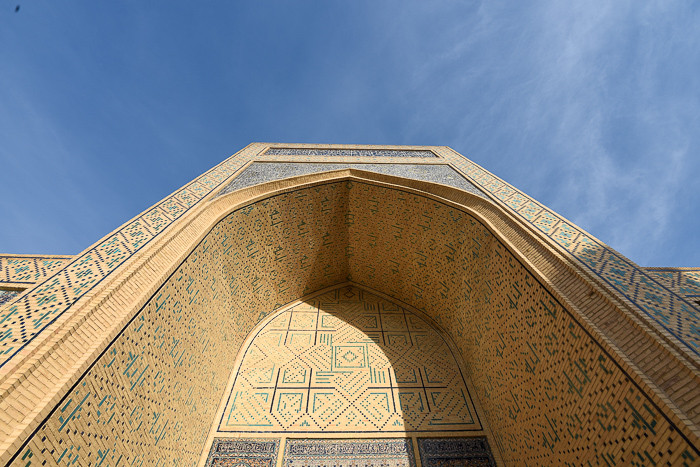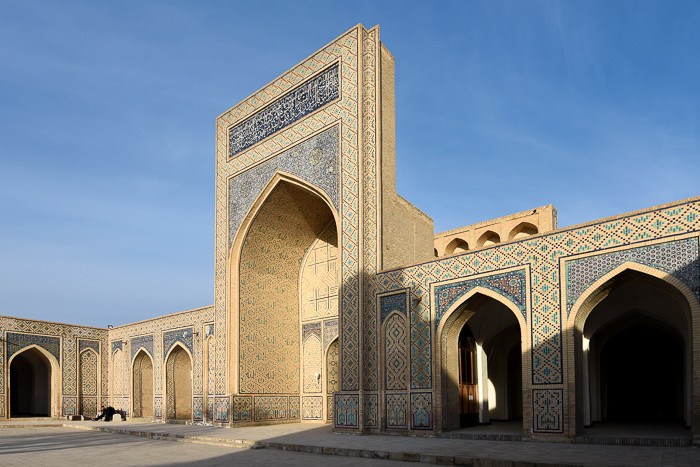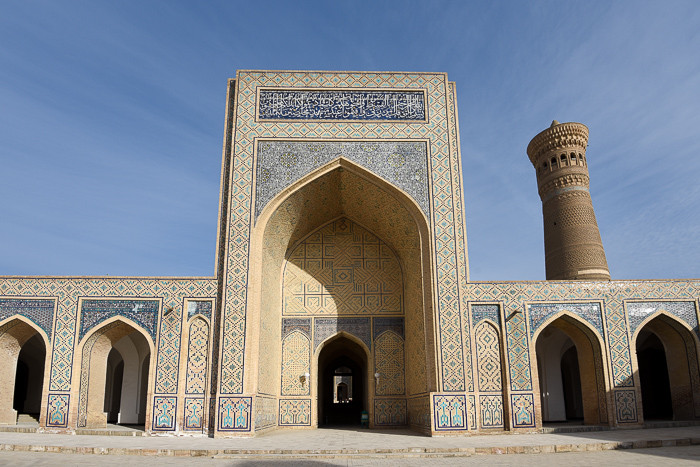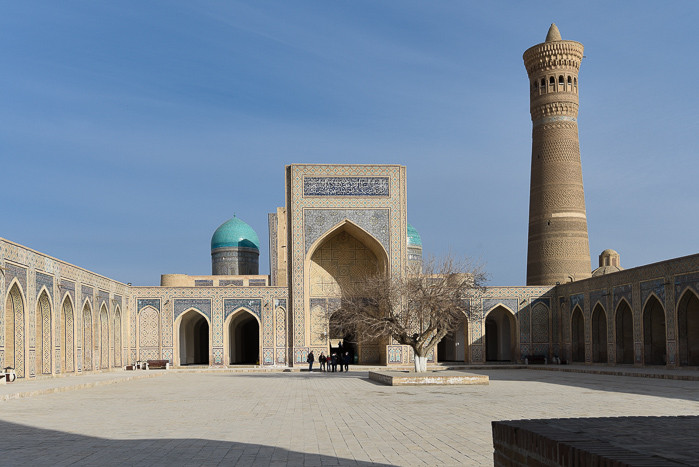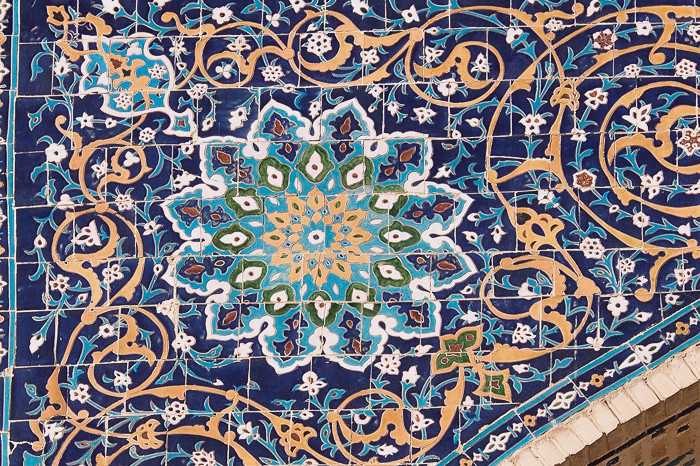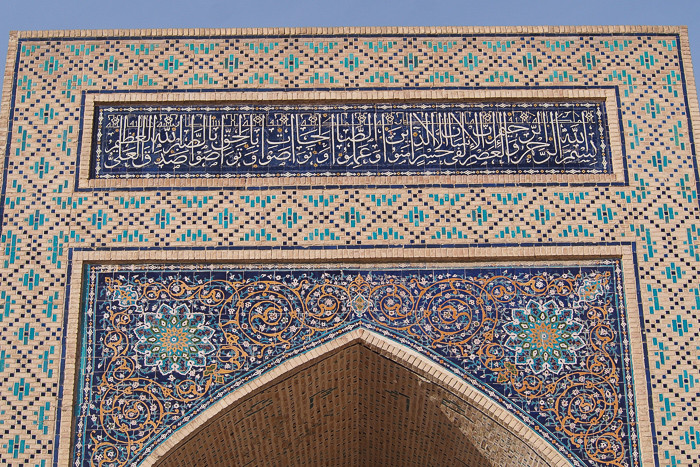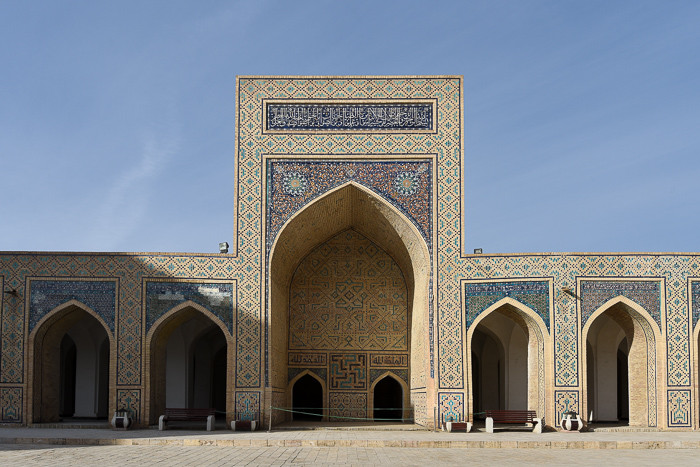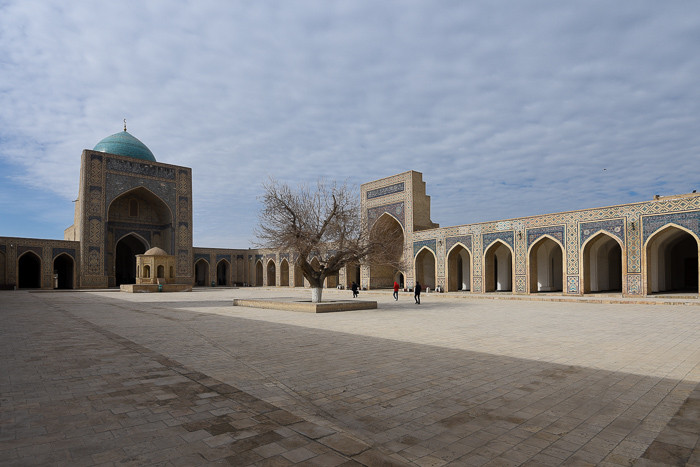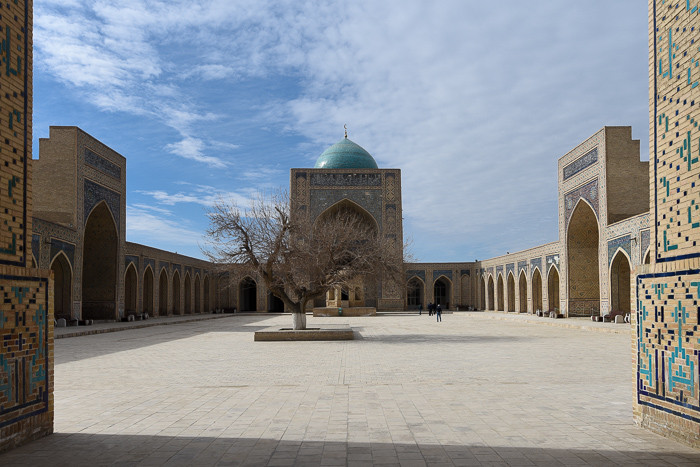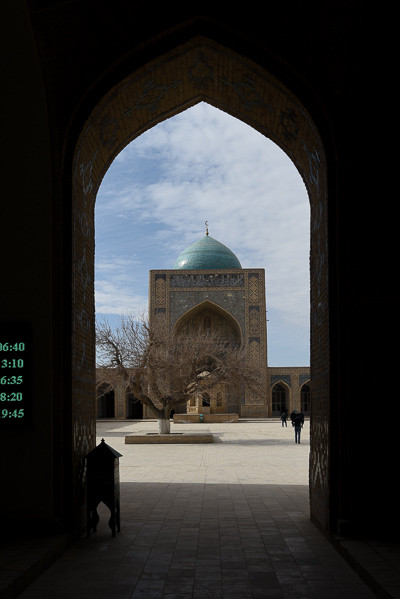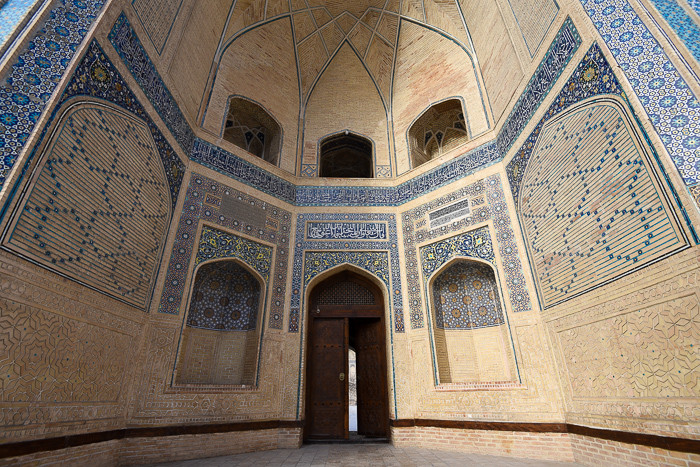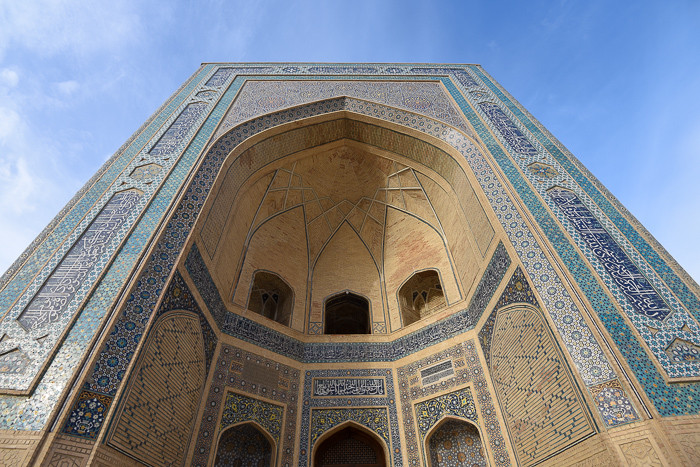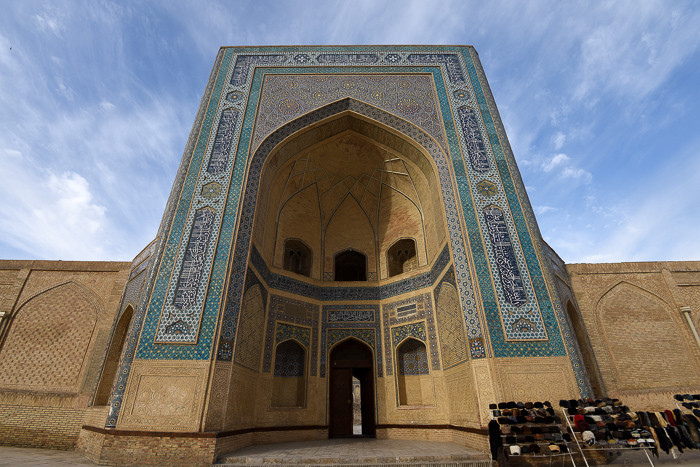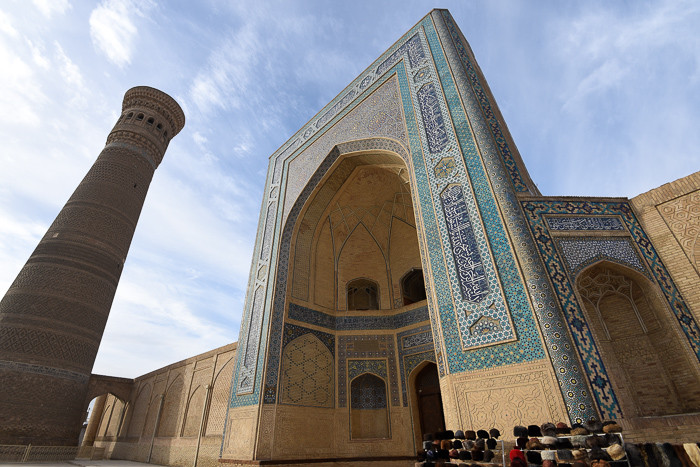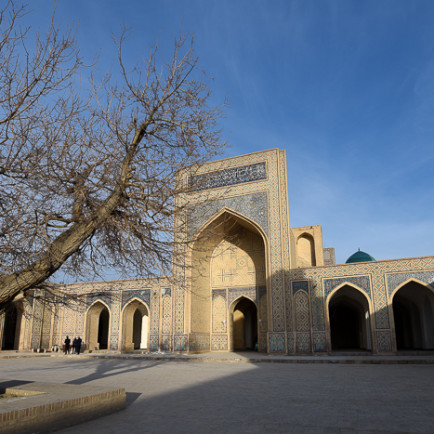Kalyan Mosque
History
built a new mosque between the citadel and the city. The old mosque gradually deteriorated and was eventually turned into the city's tax bureau. The new mosque (or another replacement built after 793/94) was later enlarged by a third by Ismail Samani in the 10th century. Early in the reign of one of his successors, Nasr II (r. 914-943) the mosque collapsed on a Friday, killing a great number of people. Al-Narshakhi wrote that "In the entire city many people perished, so afterwards the city of Bukhara seemed empty" (Frye translation, p. 67). The mosque was quickly reconstructed over the course of the year, only to collapse again—this time without casualties. A replacement built five years later proved more durable, surviving until the year 1068 when it was destroyed by fire during an internecine battle for control of the city.
Urban and Architectural
As noted above, the current mosque likely follows the 12th century Kara-Khanid footprint, measuring 130 x 80 meters. Unfortunately we know little about the layout of the Kara-Khanid era mosque and its predecessors; the present floor plan was likely derived from Timurud-era precedent such as the the Bibi Khanum mosque of Samarkand, built in 1399. Both buildings feature a four-iwan plan, a large interior courtyard, a high dome over the mihrab, and deep hypostyle halls vaulted in hundreds of small domes—288 in all at the Kalyan Mosque.
The east-facade entrance features a monument iwan with a half dome; the exterior surface is covered with elaborate and costly mosaic faience tiles. On the opposite end of the building is a mihrab—a niche facing Mecca—surrounded with tilework signed by its creater, Bayazid Purani. The domed chamber in front of the mihrab is complemented on the exterior by a blue-tiled dome set upon a high drum wrapped in kufic calligraphy. A ring of miniature muqarnas faulting marks the zone of transition between the drum and dome.
Unlike the Mir-i Arab madrasa on the opposite side of the square, the mosque is an inward-facing building with no exterior windows. Even so, the inner courtyard is anything but claustrophobic. The arcaded walls are low enough that neighboring buildings are readily visible. As it is set on-axis with the Mir-i Arab madrasa, the domes of the madrasa rise over the east arcade, creating a sense of harmonious depth that draws the eye outward and upward. The graceful form of the closer--and far taller--Kalyan minaret accentuates this effect. By contrast, the interior of the courtyard is completely barren apart from a small octagonal kiosk on the west end and a solitary tree facing it to the east.
At present, the mosque remains in active use. Its continuous presence—in one incarnation or the other—underscores Bukhara's status as one of the premiere Islamic cities of central Asia.
Description
References
All images copyright 2019 Timothy M. Ciccone. Photographed February 2019.
Chuvin, Pierre and Gerard Degeorge. Samarkand, Bukhara, Khiva. Italy: Flammarion, 2001.
Dani, Ahmad H., et al. History of Civilizations of Central Asia. Paris: Unesco, 1992.
Gangler, Anette et. al. Bukhara: the Eastern Dome of Islam. City: Axel Menges, 2004.
Gink, Karoly and Gombos, Karoly. Uzbekistan: Bukhara, Khiva, Samarkand. Hungary: Corvina Press, 1976.
Grabar, Oleg. “The Earliest Islamic Commemorative Structures, Notes and Documents.” Ars Orientalis, vol. 6, 1966, pp. 7–46. JSTOR, www.jstor.org/stable/4629220.
Hattstein, Markus, and Peter Delius. Islam: Art and Architecture. Germany: H.F. Ullman, 2007.
Hillenbrand, Robert. Islamic Architecture. New York: Columbia University Press, 1994.
Knobloch, Edgar. Monuments of Central Asia. London: I.B. Tauris: in the United States and Canada distributed by St. Martin's Press, 2001.
Soustel, Jean & Porter, Yves. Tombs of Paradise: The Shah-e Zende in Samarkand and Architectural Ceramics of Central Asia. Hong Kong: Paul Holberton publishing, 2002.
Details
Location
Bukhara, Uzbekistan, The approximate location of the site is 39.777729' N, 64.407356' E (WGS 84 map datum).
Year of Build
(12th century site, last rebuilt early 16th century)
Drawings
Map
History
built a new mosque between the citadel and the city. The old mosque gradually deteriorated and was eventually turned into the city's tax bureau. The new mosque (or another replacement built after 793/94) was later enlarged by a third by Ismail Samani in the 10th century. Early in the reign of one of his successors, Nasr II (r. 914-943) the mosque collapsed on a Friday, killing a great number of people. Al-Narshakhi wrote that "In the entire city many people perished, so afterwards the city of Bukhara seemed empty" (Frye translation, p. 67). The mosque was quickly reconstructed over the course of the year, only to collapse again—this time without casualties. A replacement built five years later proved more durable, surviving until the year 1068 when it was destroyed by fire during an internecine battle for control of the city.
Urban and Architectural
As noted above, the current mosque likely follows the 12th century Kara-Khanid footprint, measuring 130 x 80 meters. Unfortunately we know little about the layout of the Kara-Khanid era mosque and its predecessors; the present floor plan was likely derived from Timurud-era precedent such as the the Bibi Khanum mosque of Samarkand, built in 1399. Both buildings feature a four-iwan plan, a large interior courtyard, a high dome over the mihrab, and deep hypostyle halls vaulted in hundreds of small domes—288 in all at the Kalyan Mosque.
The east-facade entrance features a monument iwan with a half dome; the exterior surface is covered with elaborate and costly mosaic faience tiles. On the opposite end of the building is a mihrab—a niche facing Mecca—surrounded with tilework signed by its creater, Bayazid Purani. The domed chamber in front of the mihrab is complemented on the exterior by a blue-tiled dome set upon a high drum wrapped in kufic calligraphy. A ring of miniature muqarnas faulting marks the zone of transition between the drum and dome.
Unlike the Mir-i Arab madrasa on the opposite side of the square, the mosque is an inward-facing building with no exterior windows. Even so, the inner courtyard is anything but claustrophobic. The arcaded walls are low enough that neighboring buildings are readily visible. As it is set on-axis with the Mir-i Arab madrasa, the domes of the madrasa rise over the east arcade, creating a sense of harmonious depth that draws the eye outward and upward. The graceful form of the closer--and far taller--Kalyan minaret accentuates this effect. By contrast, the interior of the courtyard is completely barren apart from a small octagonal kiosk on the west end and a solitary tree facing it to the east.
At present, the mosque remains in active use. Its continuous presence—in one incarnation or the other—underscores Bukhara's status as one of the premiere Islamic cities of central Asia.
Description


